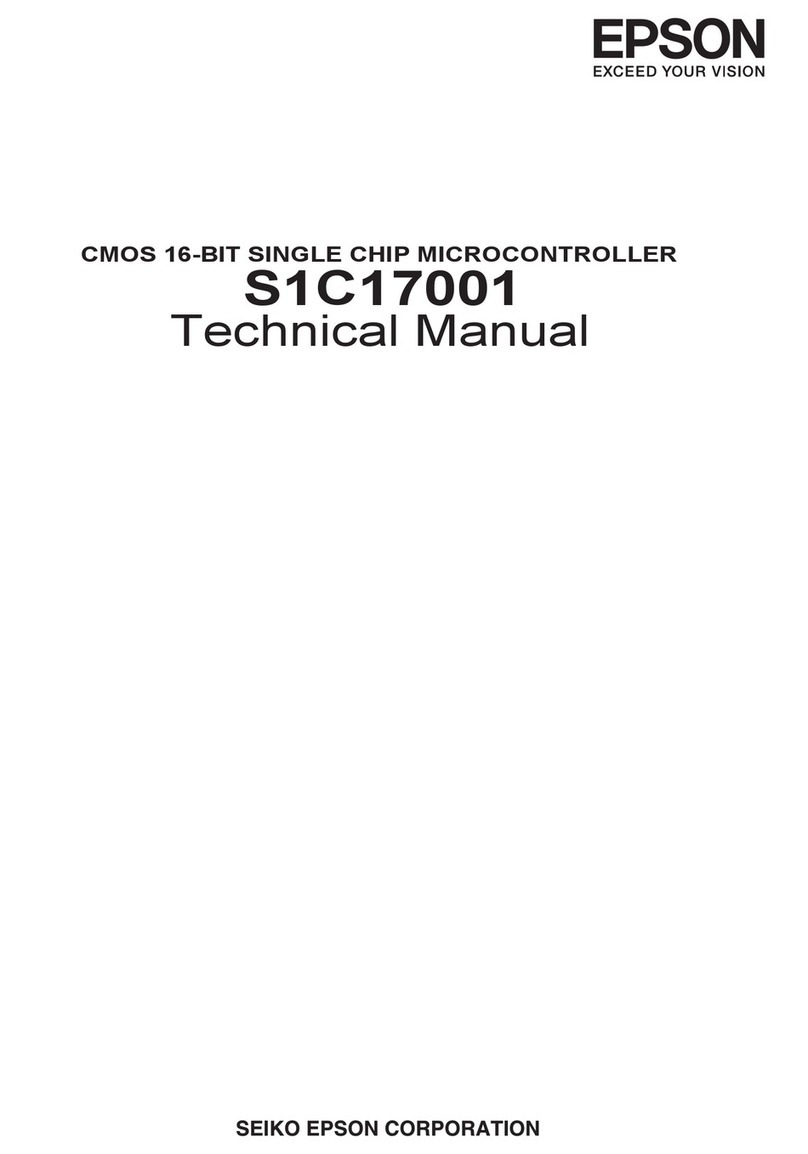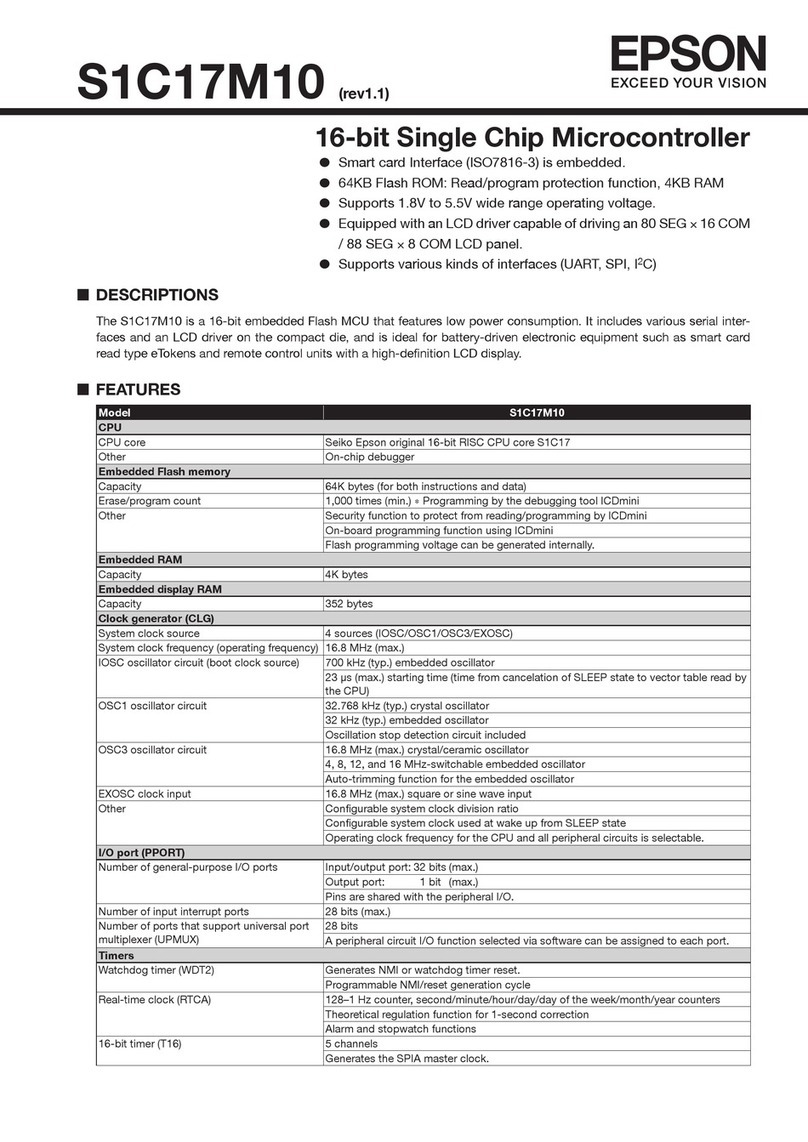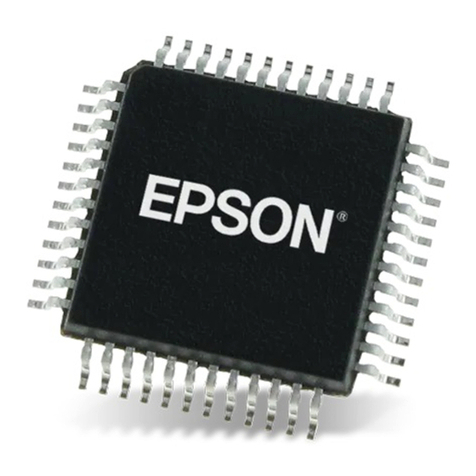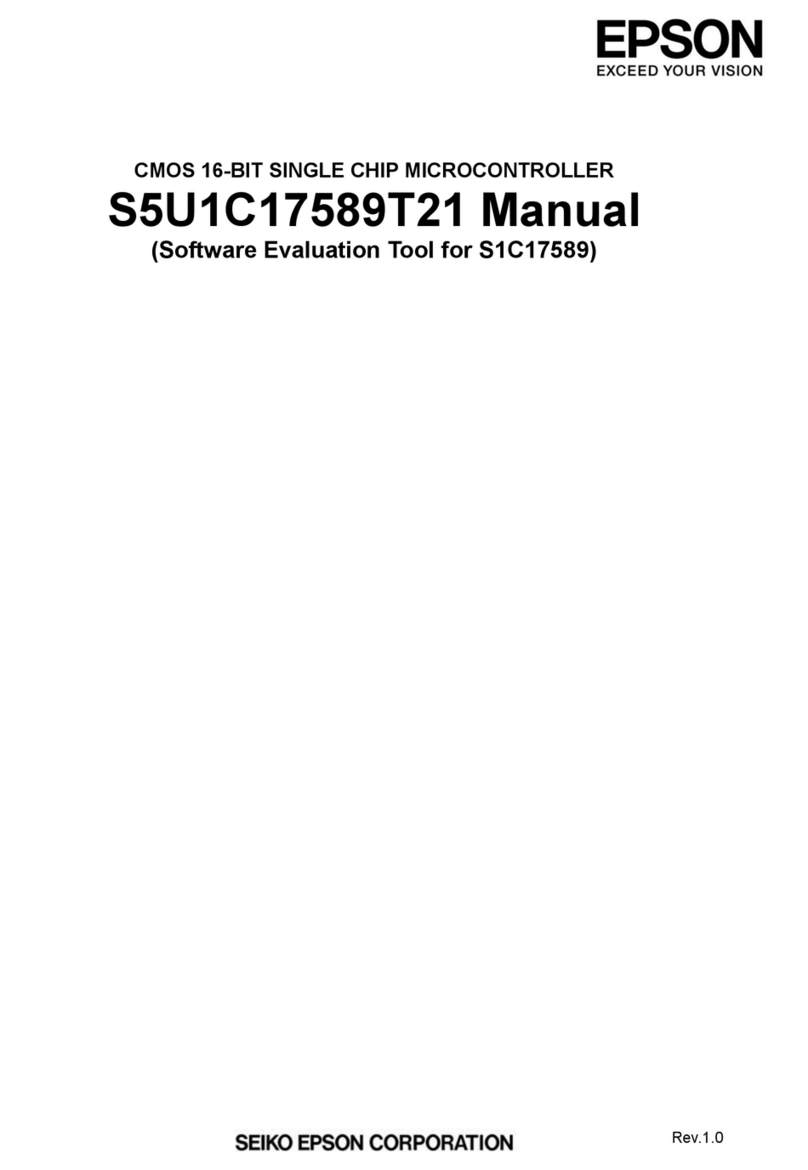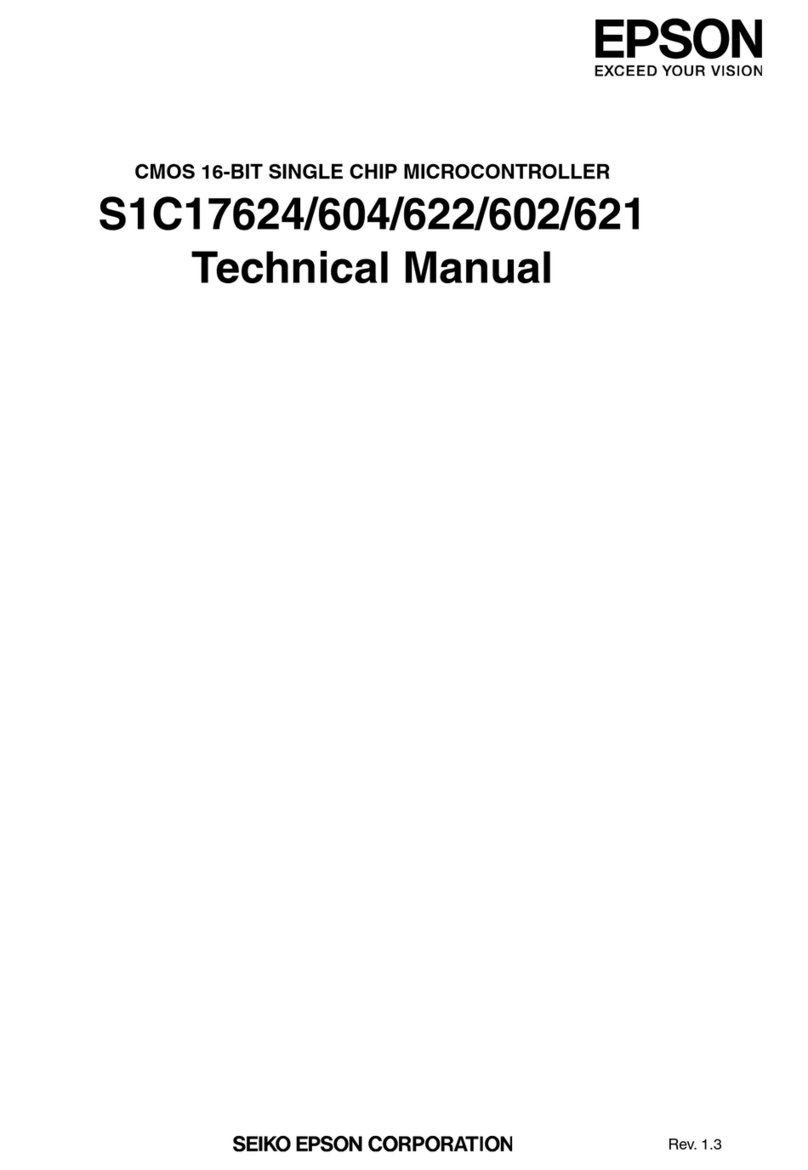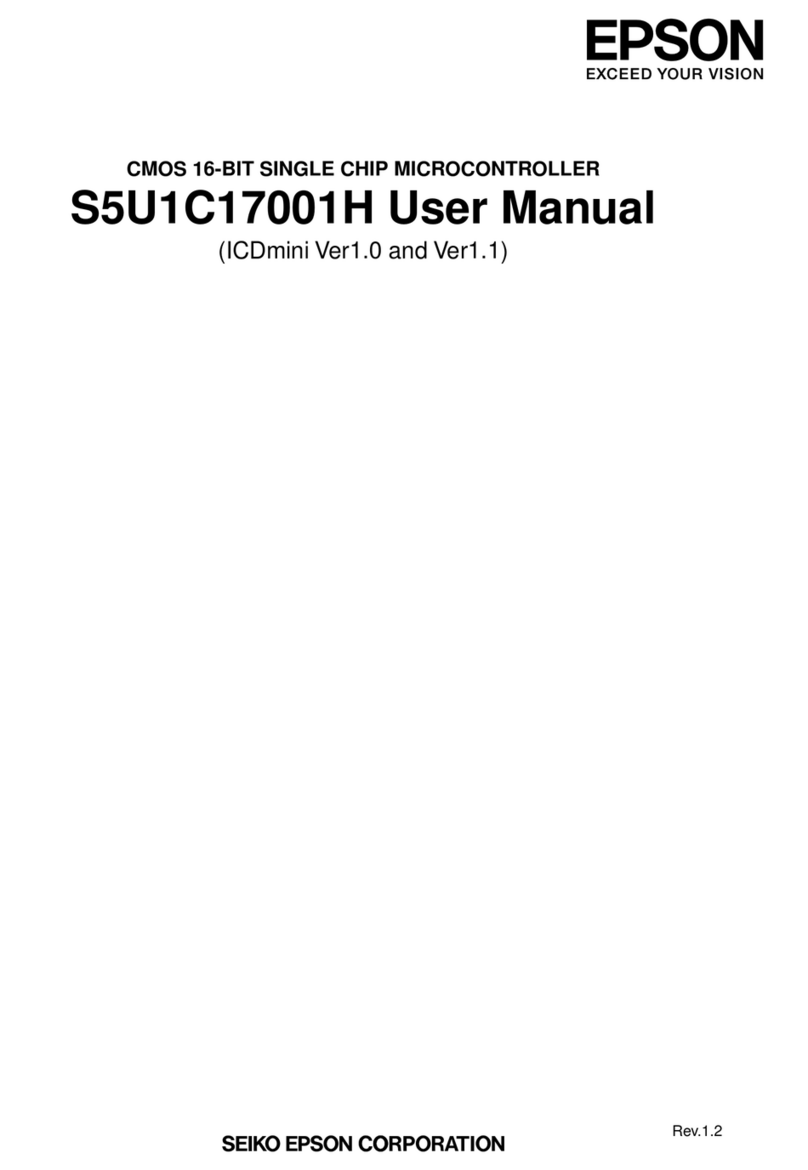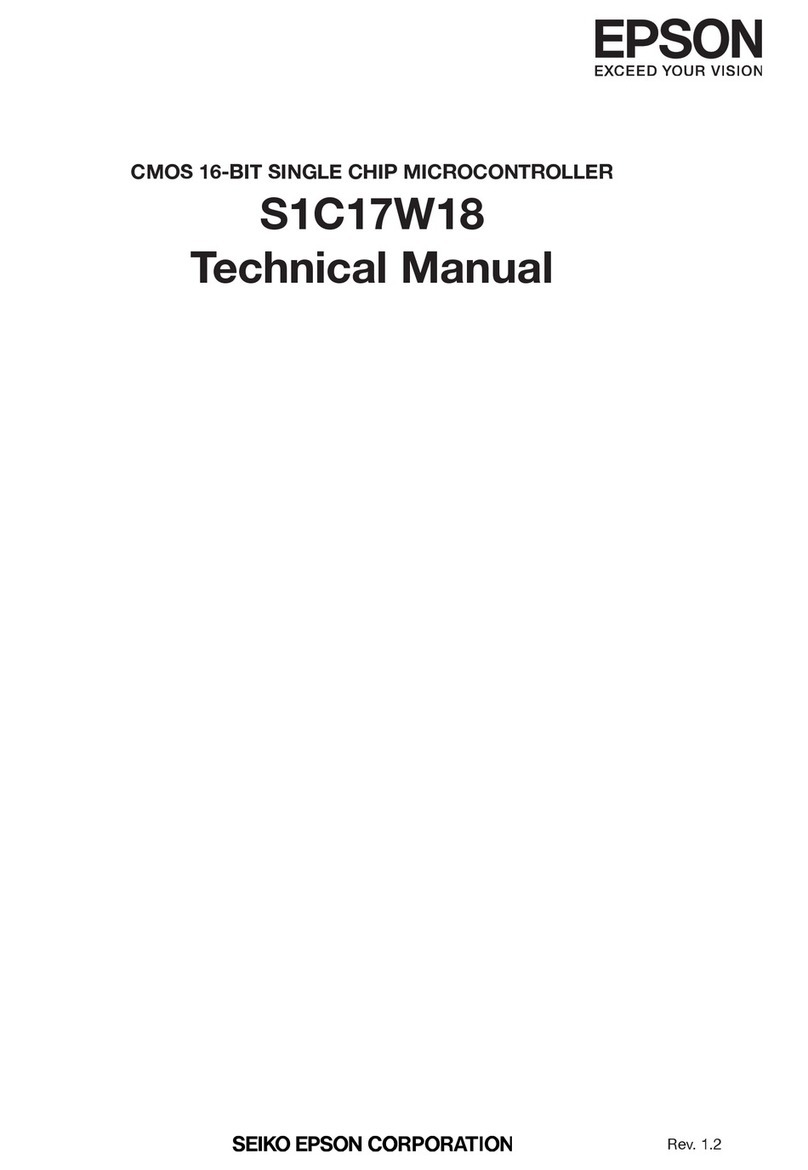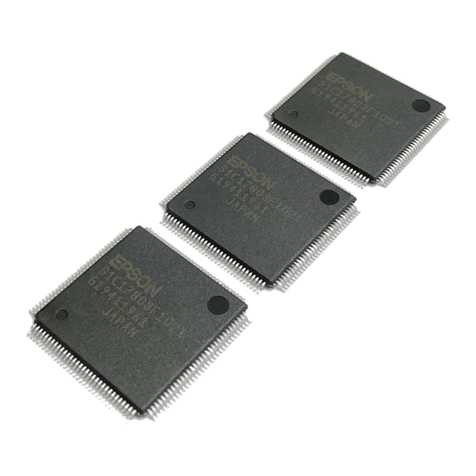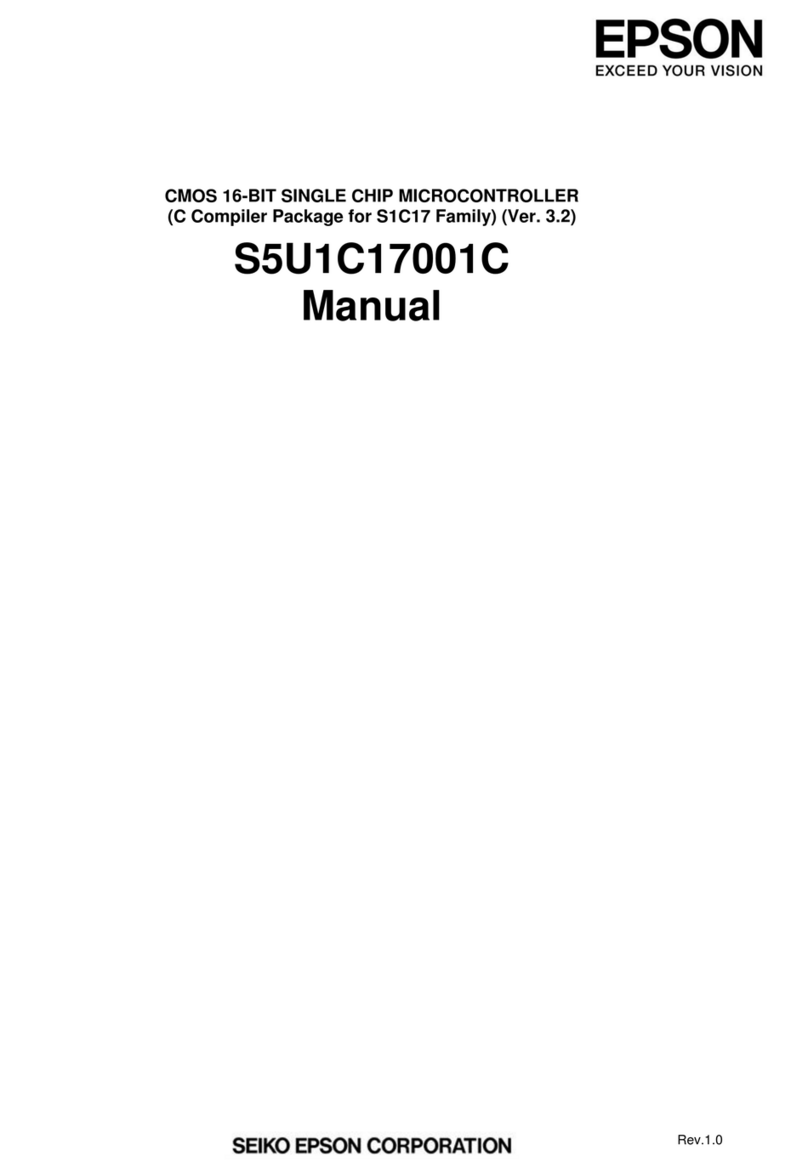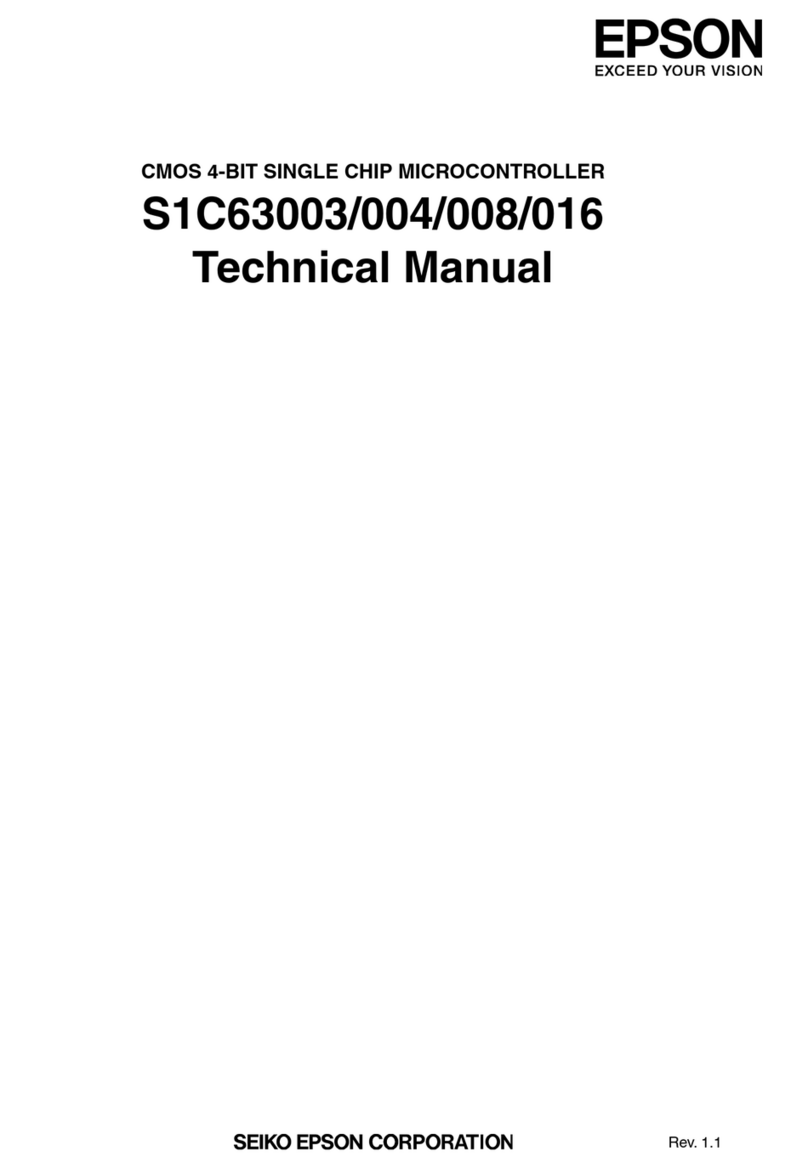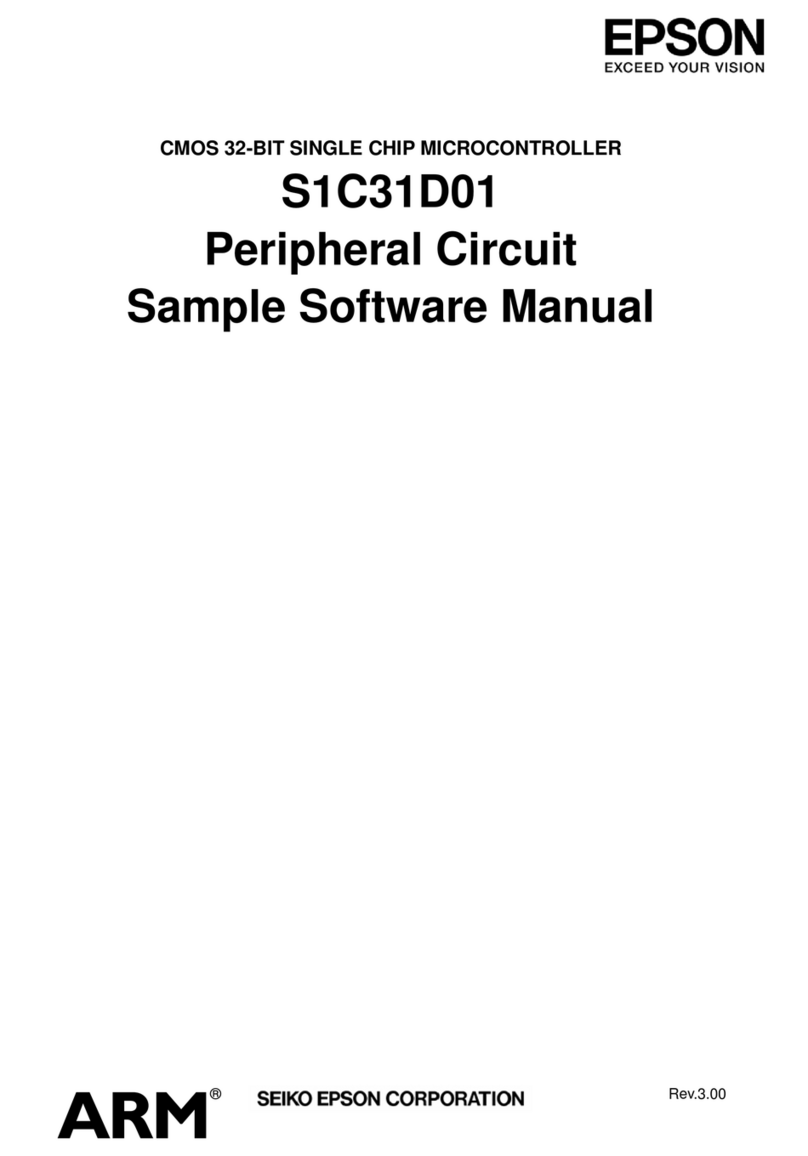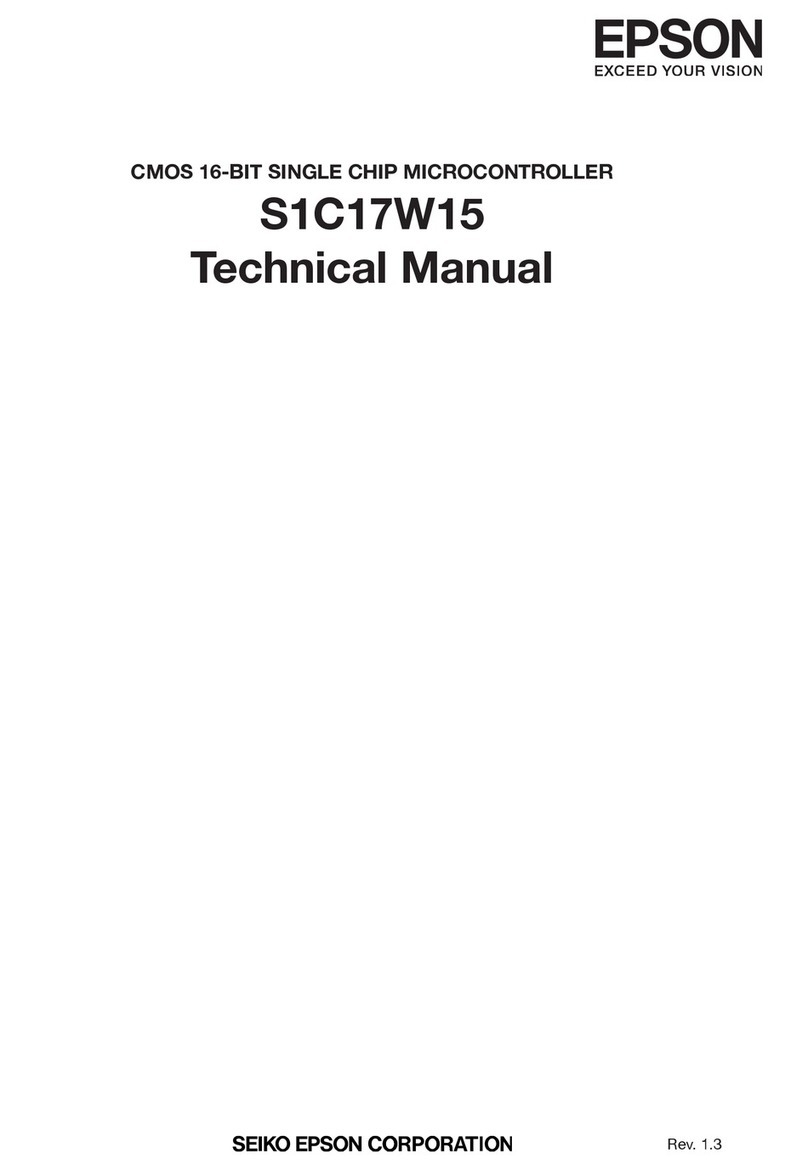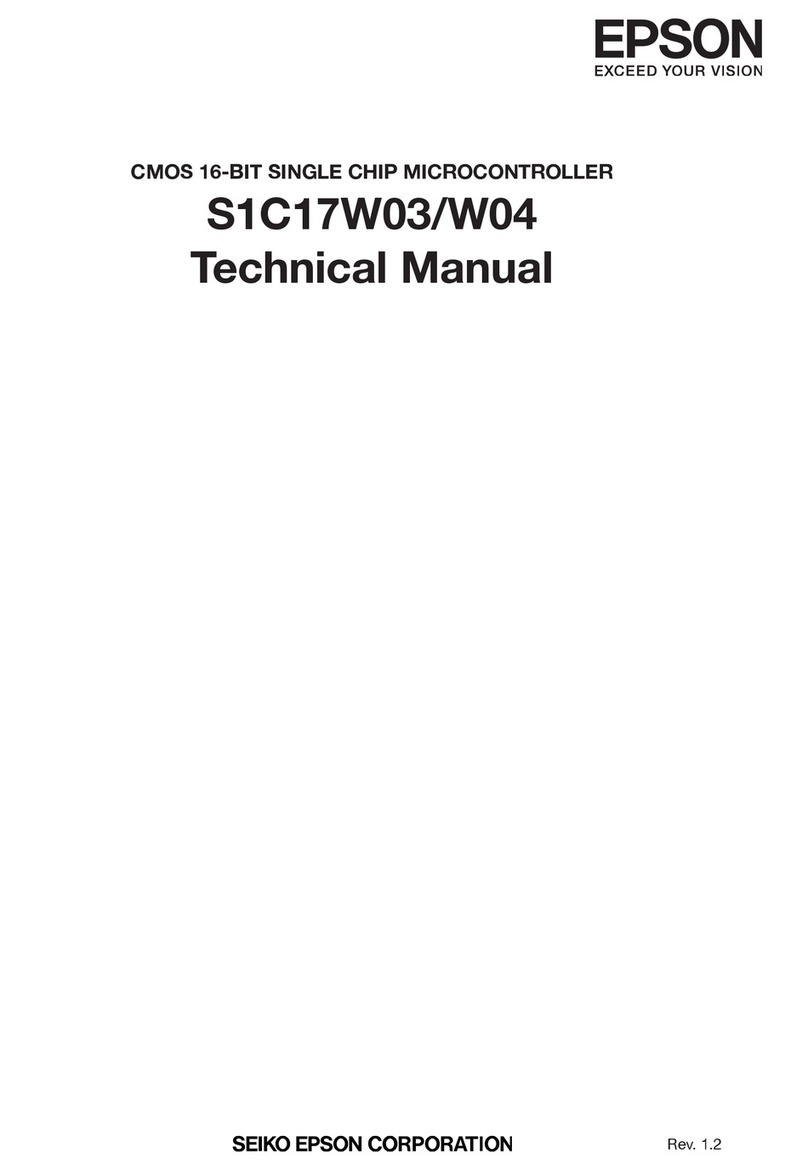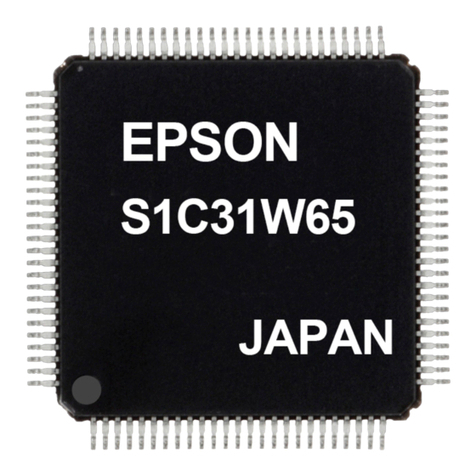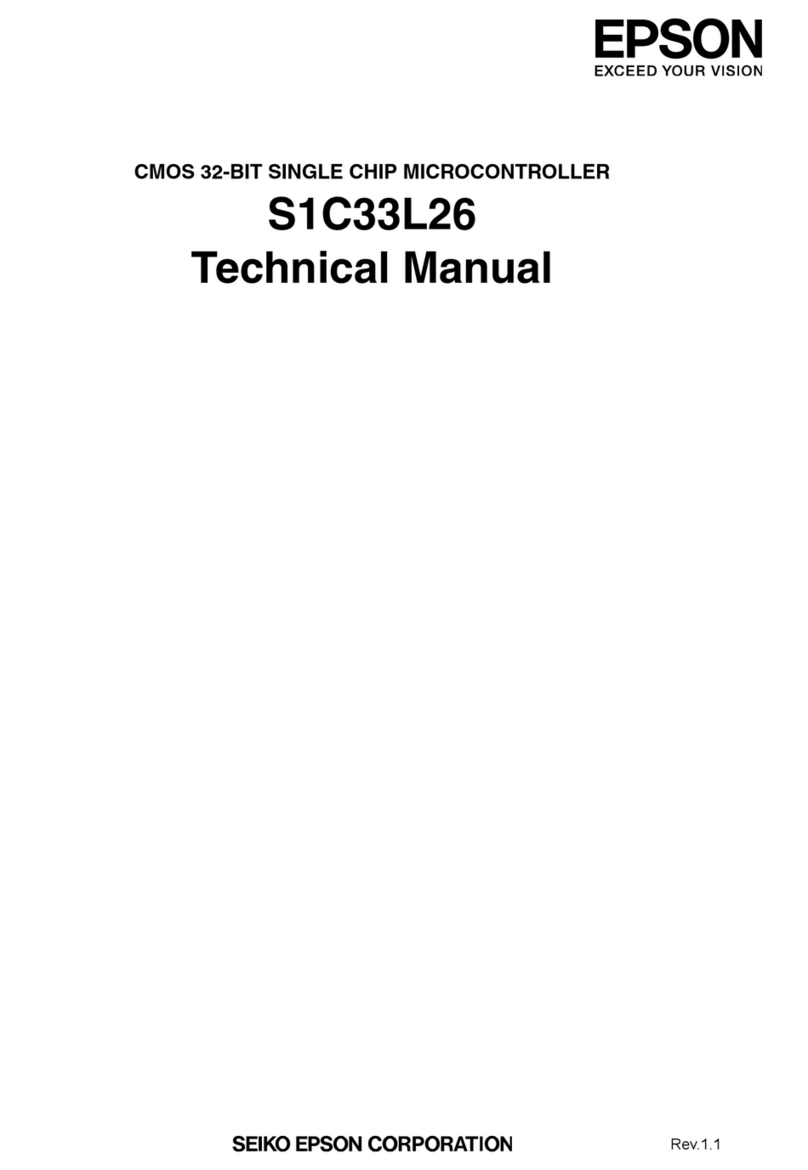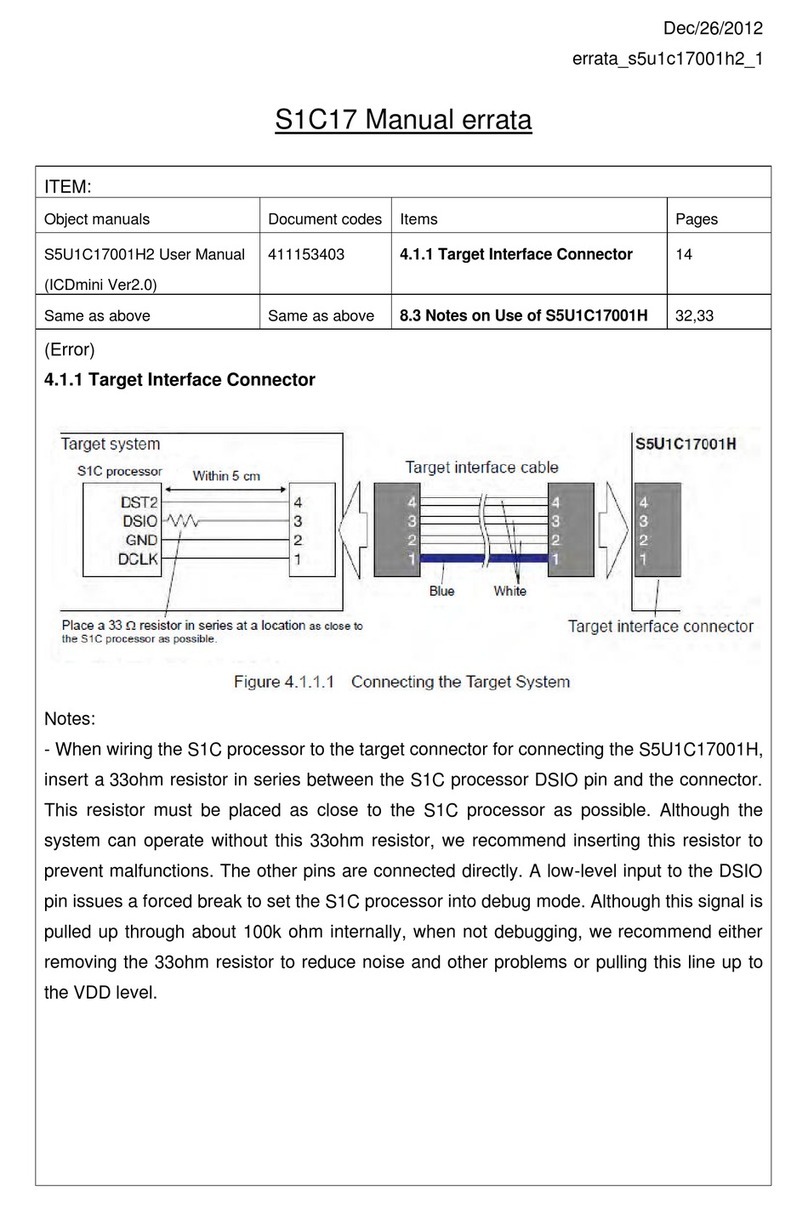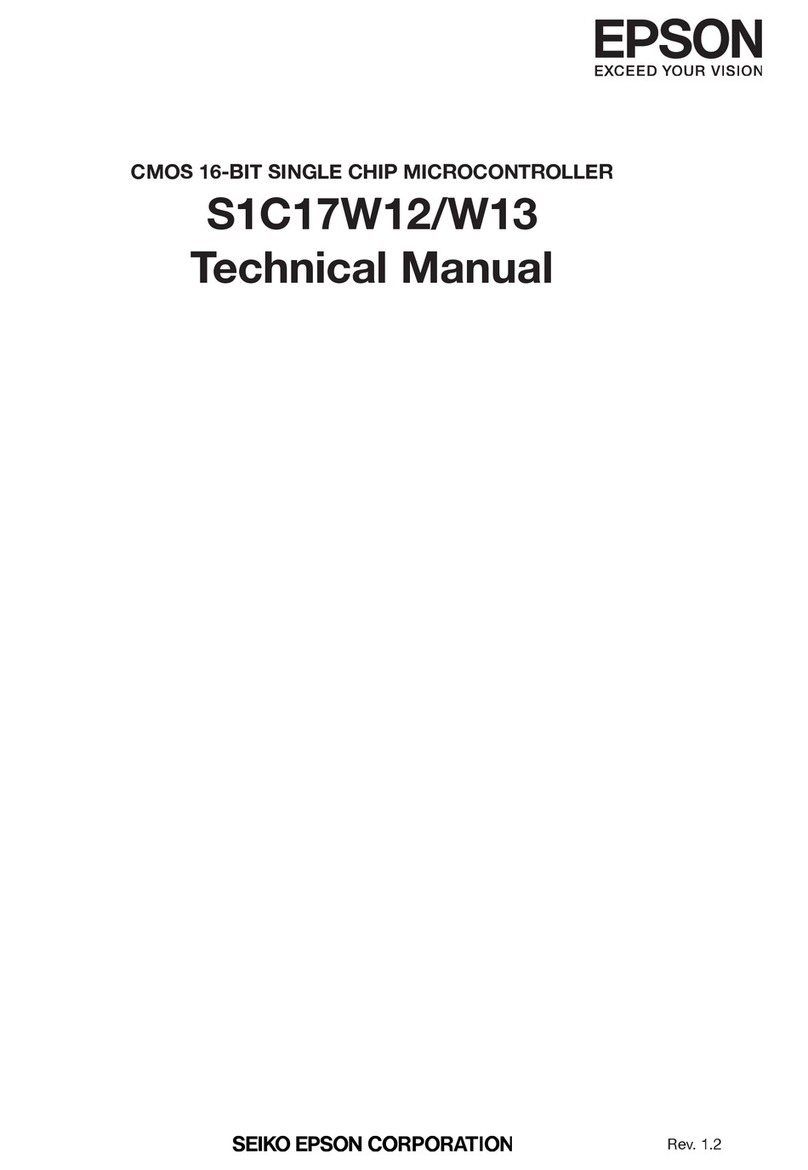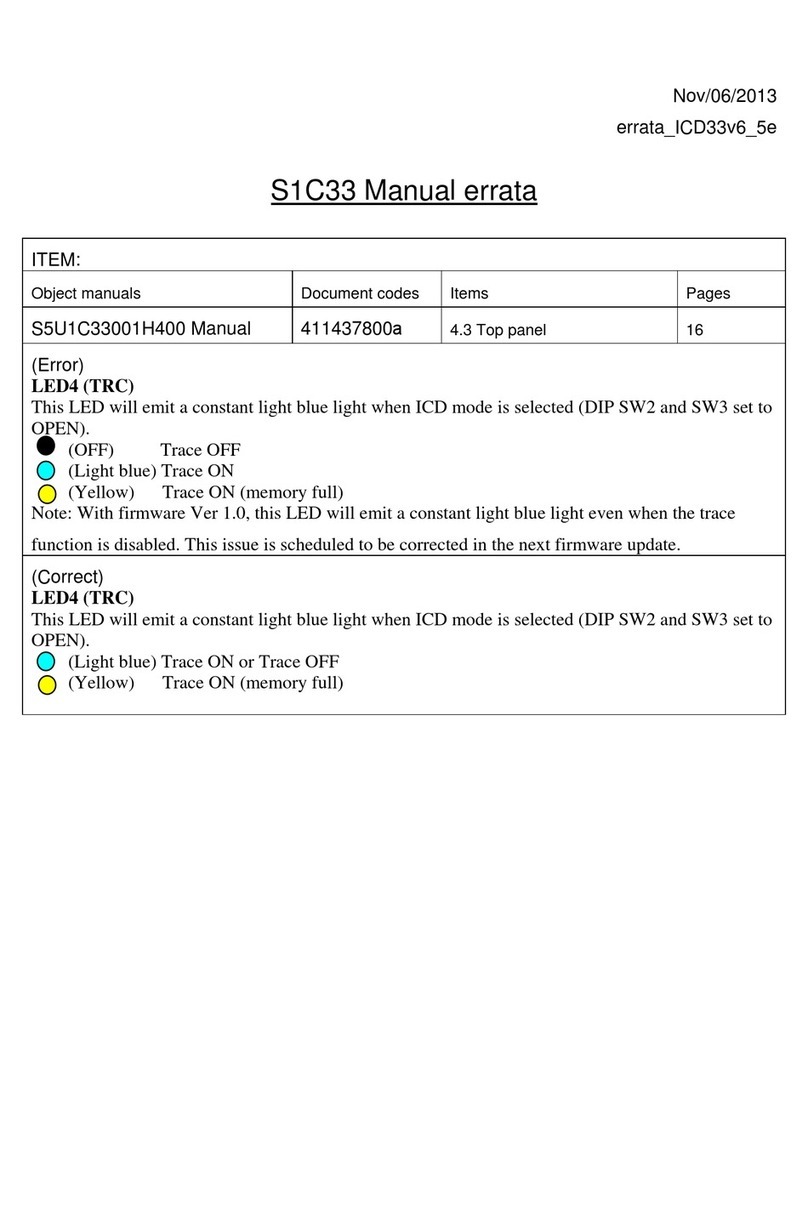
CONTENTS
S1C17F13 TECHNICAL MANUAL Seiko Epson Corporation v
(Rev. 1.0)
6.4 Operations ...................................................................................................................... 6-3
6.4.1 Initialization ....................................................................................................... 6-3
6.4.2 Port Input/Output Control................................................................................. 6-5
6.5 Interrupts......................................................................................................................... 6-6
6.6 Control Registers ............................................................................................................ 6-6
PxPort Data Register................................................................................................................ 6-6
PxPort Enable Register ............................................................................................................ 6-7
PxPort Pull-up/down Control Register..................................................................................... 6-7
PxPort Interrupt Flag Register.................................................................................................. 6-8
PxPort Interrupt Control Register............................................................................................. 6-8
PxPort Chattering Filter Enable Register.................................................................................. 6-8
PxPort Mode Select Register ................................................................................................... 6-8
PxPort Function Select Register .............................................................................................. 6-9
P Port Clock Control Register ................................................................................................... 6-9
P Port Interrupt Flag Group Register........................................................................................ 6-10
6.7 Control Register and Port Function Configuration of this IC ......................................... 6-11
6.7.1 P0 Port Group.................................................................................................. 6-11
6.7.2 P1 Port Group.................................................................................................. 6-12
6.7.3 P2 Port Group.................................................................................................. 6-12
6.7.4 P3 Port Group.................................................................................................. 6-13
6.7.5 P4 Port Group.................................................................................................. 6-14
6.7.6 Pd Port Group.................................................................................................. 6-15
6.7.7 Common Registers between Port Groups....................................................... 6-15
7 Watchdog Timer (WDT)................................................................................................7-1
7.1 Overview ......................................................................................................................... 7-1
7.2 Clock Settings................................................................................................................. 7-1
7.2.1 WDT Operating Clock....................................................................................... 7-1
7.2.2 Clock Supply in DEBUG Mode......................................................................... 7-2
7.3 Operations ...................................................................................................................... 7-2
7.3.1 WDT Control ..................................................................................................... 7-2
7.3.2 Operations in HALT and SLEEP Modes............................................................ 7-2
7.4 Control Registers ............................................................................................................ 7-3
WDT Clock Control Register ..................................................................................................... 7-3
WDT Control Register ............................................................................................................... 7-3
8 Supply Voltage Detector (SVD)....................................................................................8-1
8.1 Overview ......................................................................................................................... 8-1
8.2 Input Pin and External Connection ................................................................................. 8-2
8.2.1 Input Pin............................................................................................................ 8-2
8.2.2 External Connection ......................................................................................... 8-2
8.3 Clock Settings................................................................................................................. 8-2
8.3.1 SVD Operating Clock........................................................................................ 8-2
8.3.2 Clock Supply in SLEEP Mode .......................................................................... 8-2
8.3.3 Clock Supply in DEBUG Mode......................................................................... 8-3
8.4 Operations ...................................................................................................................... 8-3
8.4.1 SVD Control ...................................................................................................... 8-3
8.4.2 SVD Operations ................................................................................................ 8-4
8.5 SVD Interrupt and Reset ................................................................................................. 8-4
8.5.1 SVD Interrupt .................................................................................................... 8-4
8.5.2 SVD Reset......................................................................................................... 8-5
8.6 Control Registers ............................................................................................................ 8-5
SVD Clock Control Register ...................................................................................................... 8-5
SVD Control Register ................................................................................................................ 8-6


